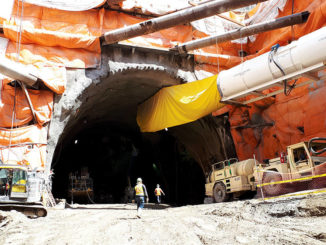
The last time Leasider Gordon Champion visited North Toronto Treatment Plant (NTTP) was after Hurricane Hazel in 1954. He went there as a service engineer with the Montreal engineering firm that was the agent for the manufacturer of the “reciprocating compressors” or blowers (similar to pumps but blowing not pumping). The plant was flooded, causing the compressors to spew sewage, not air, to the tanks! You can imagine the job he was required to do. Now, 65 years later, he’s proud that those same compressors that he cleaned and serviced are still in operation. The pumps are, in fact, the same ones that were installed when the plant was first constructed in 1929. They’re kept around because they were built to last, and have been well maintained over the years.
Located at the bottom of the Don River Valley, right below the Loblaws mega-store off Redway Road, the NTTP is part of a hidden Toronto, off-limits, out of the way, and not open to the public. Unseen yet a life-critical utility. Today it handles raw sewage and storm water coming from 3,000 residential and industrial acres, covering Leaside, North Toronto, and more, an area with a population of 55,000. Altogether, it handles 25 million litres per day, the equivalent of 10 Olympic swimming pools, through a series of process stages involving physical, chemical and biological treatments.
The North Toronto Treatment Plan is one of several legacy projects of R.C. Harris, Toronto’s legendary Commissioner of Public Works (others are the water treatment plant on Queen Street in the Beach that bears his name, and the Prince Edward Viaduct). In 2012, John Lorinc described its origins: “When North Toronto residents threatened to de-amalgamate over complaints about inadequate sewage treatment in the late 1920s, Mr. Harris responded by building the North Toronto Sewage Treatment Plant, nestled in the Don Valley. It still operates”.

The NTTP dodged a bullet in the 1990s when a proposal to close it was reversed. Although the NTTP is small in comparison to the Ashbridges Bay plant, it serves another purpose – to maintain flow in the Don River in summer. And the water quality of the effluent is better than what’s coming from upstream.
But change is coming. The City’s Wet Weather Flow Master Plan (WWFMP), approved by City Council in 2003 is a 25-year plan to improve water quality and aquatic habitats in Toronto’s watercourses and along Toronto’s Inner Harbour. Construction at the North Toronto Treatment Plant will involve the building of an underground tunnel shaft to capture and store combined sewer overflows during extreme wet weather events until it can be transported to the Ashbridges Bay Wastewater Treatment plant (via the Coxwell Bypass Tunnel). This massive capital investment is being paid for by Toronto Water’s “rate-supported” above-inflation increases of two years of 8% increases (2015-2016), followed by two years of 5% increases (2017-2018). This year the increase is 3%.
Gordon and I both enjoyed our visit to the NTTP. Of course, for me the visit was not complete without a look at the architecture of the buildings. In my opinion the main NTTP buildings are heritage-potential, inside and out. Outside, the walls are the red brick typical of Leaside and North Toronto. Inside there is the same glazed yellow brick with rounded edges (made at the Don Valley Brickworks) that you see inside the iconic R.C. Harris Water Treatment Plant. For Gordon it’s about engineering – he thinks the tanks and compressors are just fine – they’ve practically lasted a lifetime!
Acknowlegements and thanks to Ellen Leesti, Strategic Communications, and David Dickson, Plant Process & Operations, Ashbridges Bay Treatment Plant.





